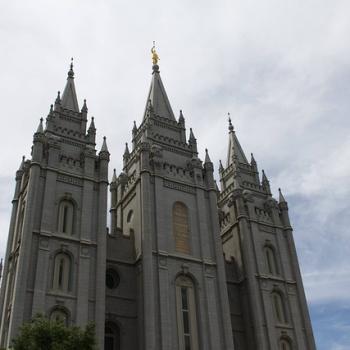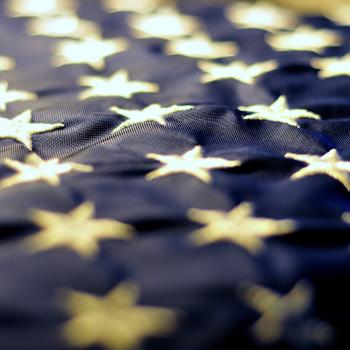LINDSEY ASKS:
All Protestants practice baptism by immersion — true or false?
THE GUY ANSWERS:
False. Protestants are divided over many tenets and that includes baptism. Churches that rarely or never fully immerse candidates’ bodies in water include the Lutheran, Methodist, Anglican (or Episcopal), Presbyterian, Reformed, etc. On the opposite side, immersion is mandatory with Baptists and many others. Also, churches in the second category believe candidates must be able to profess personal faith, ruling out infant baptism which they say was not Christianity’s original practice, and often hold an infant “dedication” ceremony instead. There’s also disagreement on the theology of baptism and whether it’s a “sacrament.”
U.S. Catholic, Presbyterian, and Reformed delegates recently affirmed two baptism rules dating from Christianity’s earliest doctrinal manual, the Didache (A.D. 120 or before): To be valid, baptism is performed “with flowing water” as the names of the three persons in the Trinity are pronounced. Note that the water is poured rather than “sprinkled” as these churches used to say. The invocation of the divine Trinity is taken verbatim from Jesus’ “great commission” in the New Testament: “Go therefore and make disciples of all nations, baptizing them in the name of the Father and of the Son and of the Holy Spirit” (Matthew 28:19).
Surprisingly, the Catholic Church is so favorable toward immersion it sounds almost Baptist, even though it rarely practices that mode. The Orthodox Church requires immersion for infants, who account for most of its baptisms.
In Catholicism, the Catechism calls immersion “the original and full sign of” baptism and says the rite is “performed in the most expressive way by triple immersion in the baptismal water.” However, the text adds that “from ancient times” baptism has also been “conferred by pouring the water three times over the candidate’s head.” So Catholicism allows either immersion or pouring, depending on personal preference, tradition, and circumstances. A statement from the U.S. Catholic bishops says the Greek word for baptism means “immersion” or “bath” so that “immersion in water is a sign of death, and emersion out of the water means new life. To bathe is also to undergo cleansing.” The bishops further note that Jesus himself underwent immersion by John the Baptist.
In Orthodoxy, infants are naked and immersed in the baptismal font three times. With adult converts, modest clothing is customary and triple pouring of water without immersion is acceptable when a deep pool of water is unavailable, which is the case in many Orthodox sanctuaries. Whether with infants or adults, Orthodoxy combines baptism with two other sacraments, Chrismation with oil (parallel to Catholic Confirmation) and First Communion. The Catholic Church baptizes infants and then delays the other two sacraments till later in life.
Baptists immerse the candidate’s full body under water, usually once, not three times. But lay Catholic Scott Richert, who blogs at http://Catholicism.about.com, asserts that in early Christianity immersion must have meant “dipping” because ancient baptistry pools discovered by archaeologists are too shallow for “submersion” of the entire body.
In churches that baptize infants, the profession of faith is affirmed on the child’s behalf by parents or godparents. Baptists object that conscious commitment to Jesus Christ is essential so they rebaptize newcomers who were baptized as infants. Catholic and Orthodox theologians say rebaptism is wrong because the Bible’s “one baptism” (Ephesians 4:5) means just that, and cite five New Testament instances where an entire “household” was baptized, arguing that this must have included some young children.
Variations of interest:
Some strict Baptists require outdoor river baptisms in line with the Didache’s “flowing water” mandate, or sometimes rebaptize persons who were immersed in churches with somewhat different doctrines (“alien immersion”).
“Oneness” Pentecostals baptize by immersion “in Jesus name” only, omitting the Trinity, so Catholics and others do not recognize their baptisms.
Quakers mostly omit baptism to put the emphasis on inward spiritual experience rather than outward ceremony.
The Salvation Army likewise does not baptize. It says its “swearing-in” ceremony is public “witness to a life-changing encounter with Christ which has already taken place” and is the equivalent of baptism in other denominations.
The Church of Jesus Christ of Latter-day Saints (“Mormon”) considers infant baptism a major example of the great apostasy that corrupted Christianity after the time of Jesus’ apostles (much later afflicting Baptists as well) until “latter-day” restoration of the true faith beginning in 19th Century America. The LDS Church, uniquely, practices proxy baptisms on behalf of personsl who have died outside the faith. Due to doctrinal differences, Catholicism and many Protestant churches do not recognize Mormon baptism and rebaptize LDS converts.
Background on Baptist beliefs: www.baptisthistory.org/pamphlets/baptism.htm
Catholic Catechism on baptism: http://www.vatican.va/archive/ccc_css/archive/catechism/p2s2c1a1.htm
Orthodox concepts: http://oca.org/orthodoxy/the-orthodox-faith/worship/the-sacraments/baptism










